The genus Proiphys
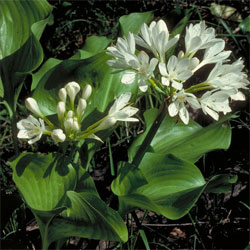 Proiphys amboinensis |
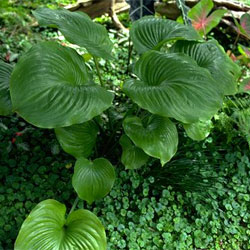 Proiphys amboinensis |
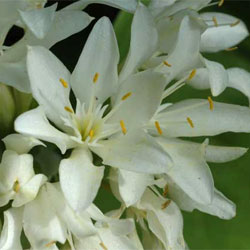 Proiphys amboinensis |
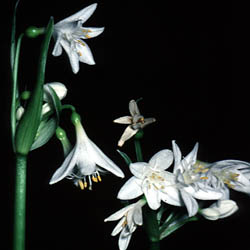 Proiphys cunninghamii |
Previously known as genus Eurycles
Proiphys alba (R.Br.) Mabb.
Proiphys amboinensis (L.) Herb.
Proiphys cunninghamii (Aiton ex Lindl.) Mabb.
The genus Proiphys belongs to the Amaryllidaceae family and comprises three species, P. alba, P. amboinensis and P. cunninghamii. The genus was known as Eurycles for many years. These plants occur in light shaded areas of the rainforest or in open forest bordering rainforest regions, extending beyond Australia to South-East Asia.
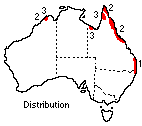
1 - P. cunninghamii, 2 - P. amboinensis, 3 - P. alba
These plants, which grow from bulbs, are not widely used in horticulture, yet the large, deeply-veined leaves which are produced on long petioles make them desirable garden subjects. The fragrant white flowers are produced in umbel-like clusters on long stems. They open in succession over a prolonged period and last well. The fruits that develop on the flower heads often germinate on the plant (new plants can be grown from these). They contain one to several fleshy seeds. Plants die back to an underground bulb during winter and should not be disturbed at this time.
Proiphys are ideally suited to warm frost-free areas and can be grown in a rockery, beside a garden pool or in pots or tubs in cooler regions. They are hardy and easily grown although development to the flowering stage is slow. They do best in well composted soil in sheltered areas of the garden with little sun.
P. amboinensis (syn. Eurycles amboinensis) is commonly called the Cardwell Lily. It is one of the most attractive in the genus and occurs naturally in rainforest and coastal areas of northern Queensland from Mackay northwards and in the northern Kimberley area of Western Australia and South-East Asia. The large kidney-shaped leaves are glossy with symmetrically curved venation. They are 200-300 mm long and 150-350 mm wide and carried on long stems 150-600 mm long. The white flowers which occur in summer have a yellow throat and are produced on stalks which can vary from 150-900 mm long.
P. alba (syn. Calostemma album, Eurycles scott-selickiana) occurs in large colonies in open forest in Queensland, the Northern Territory and the northern Kimberley region of Western Australia and Papua New Guinea. It is a hardy plant and very attractive when it is in flower between November and February. The light green leaves are the smallest of the genus and are 70-150 mm long by 5-7 mm wide, tapering at the base. The numerous white trumpet-shaped flowers are produced on erect stems 300-400 mm long. The fruit is globular and rather large.
P. cunninghamii (syn. Eurycles cunninghamii) is commonly called the Brisbane Lily or Moreton Bay Lily and is the only species confined to Australia. It has dark green heart-shaped leaves carried on long upright stems 100-250 mm long and 80-130 mm wide. It occurs naturally on the north coast of New South Wales and in south-eastern Queensland in lightly shaded conditions in the rainforest or forest bordering the rainforest.
To propagate sow the fruit in a well-drained propagation mix to which a slow release fertiliser has been added. The mixture should be about 100 mm deep to accommodate the root system. Allow plants to develop for several months before transplanting into a larger container or before planting out. Guard against snails in the early stages of development.
Text by Effie Mullins, ANBG (1989)
Name meaning: Proiphys speciesProiphys - from Greek proi, early and phyo, to bring forth, referrring to the 'early' germination of the seed whilst on the plant, alba - white, amboinensis - from Ambon, an Indonesian island, cunninghamii - in honour of Alan Cunningham (1791 - 1839), prominent botanical collector in Australia. |
![An Australian Government Initiative [logo]](/images/austgovt_brown_90px.gif)

